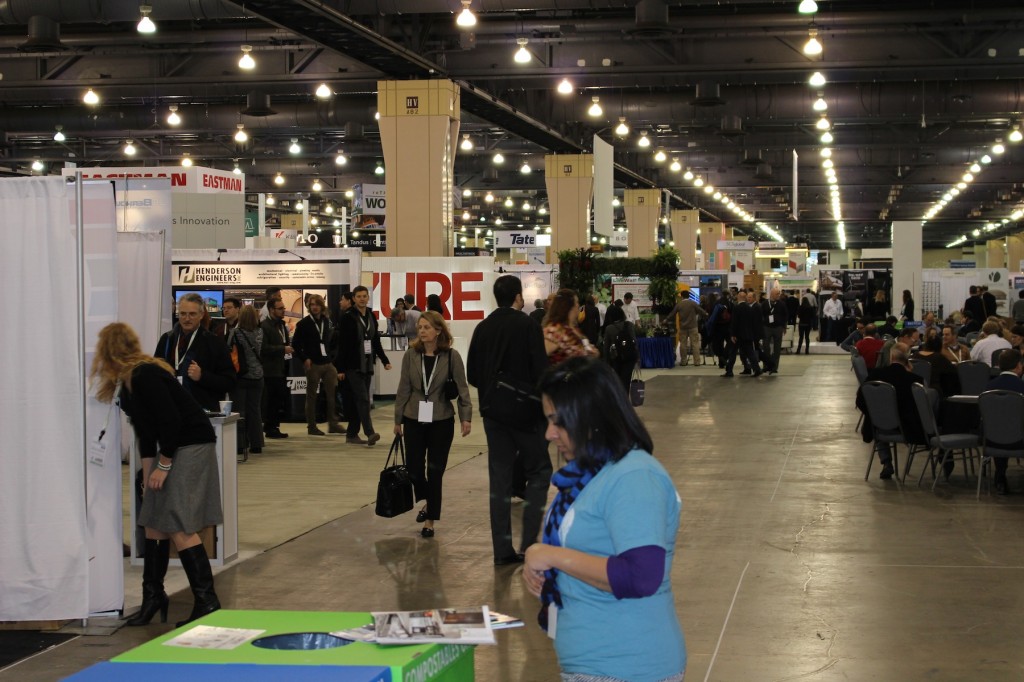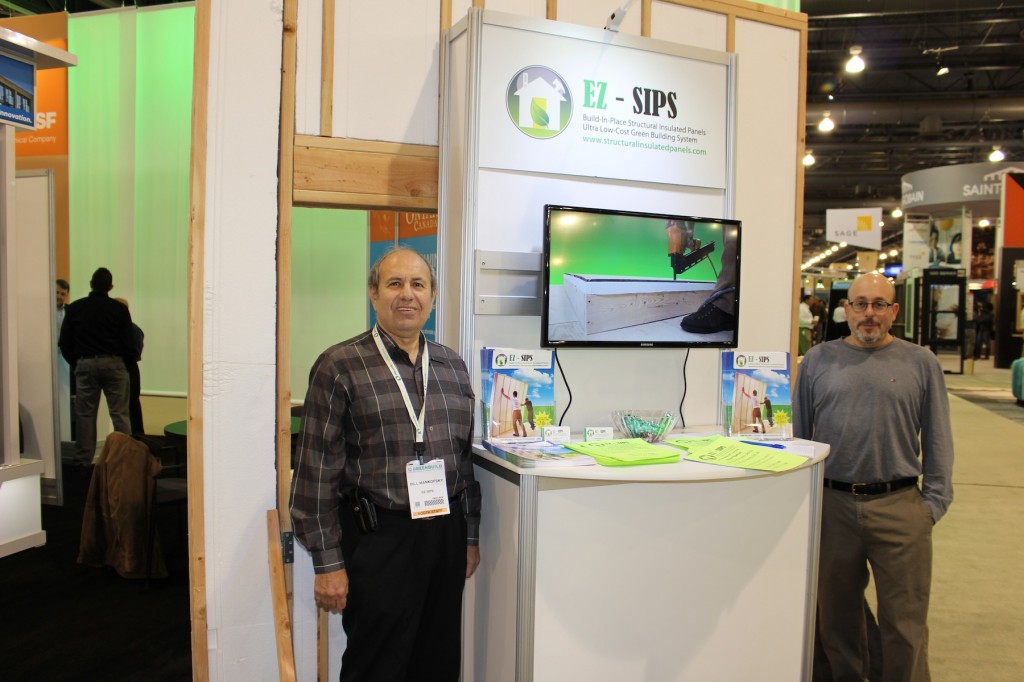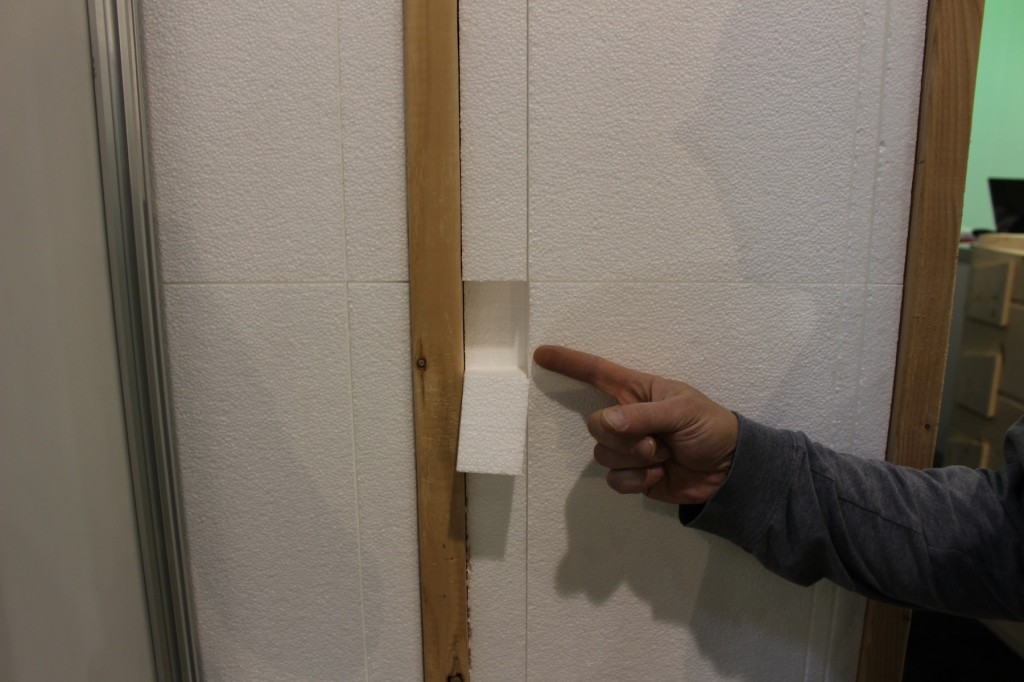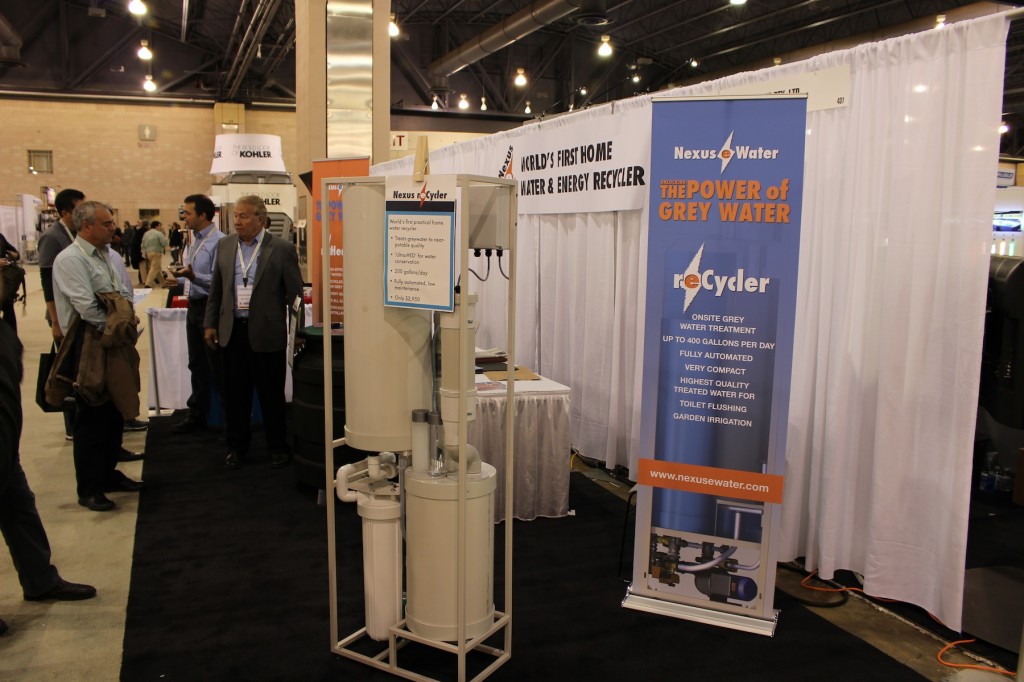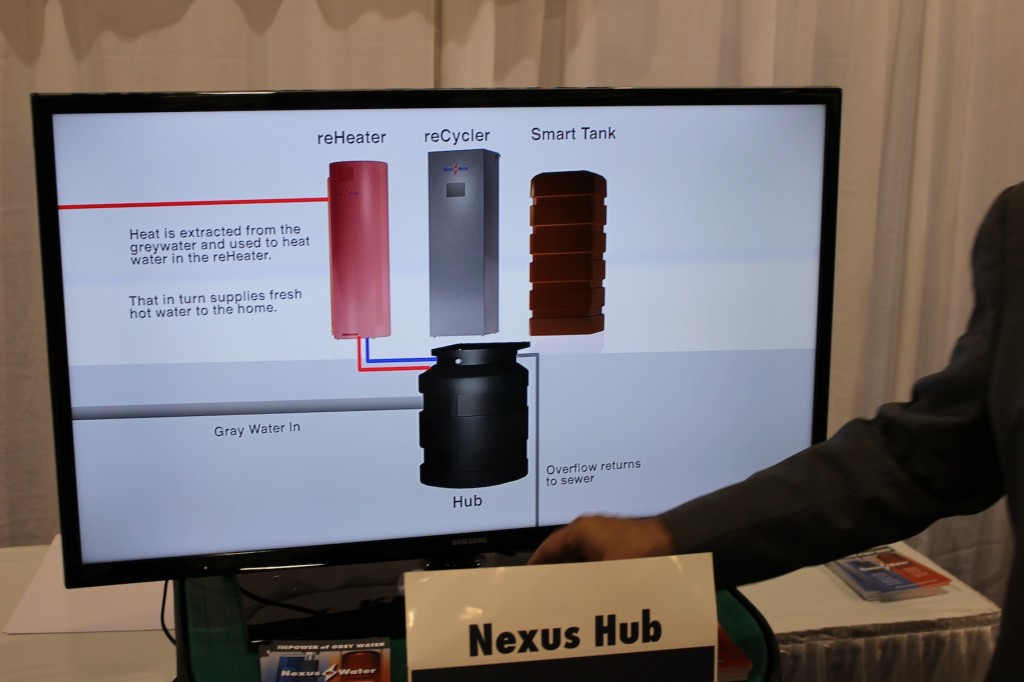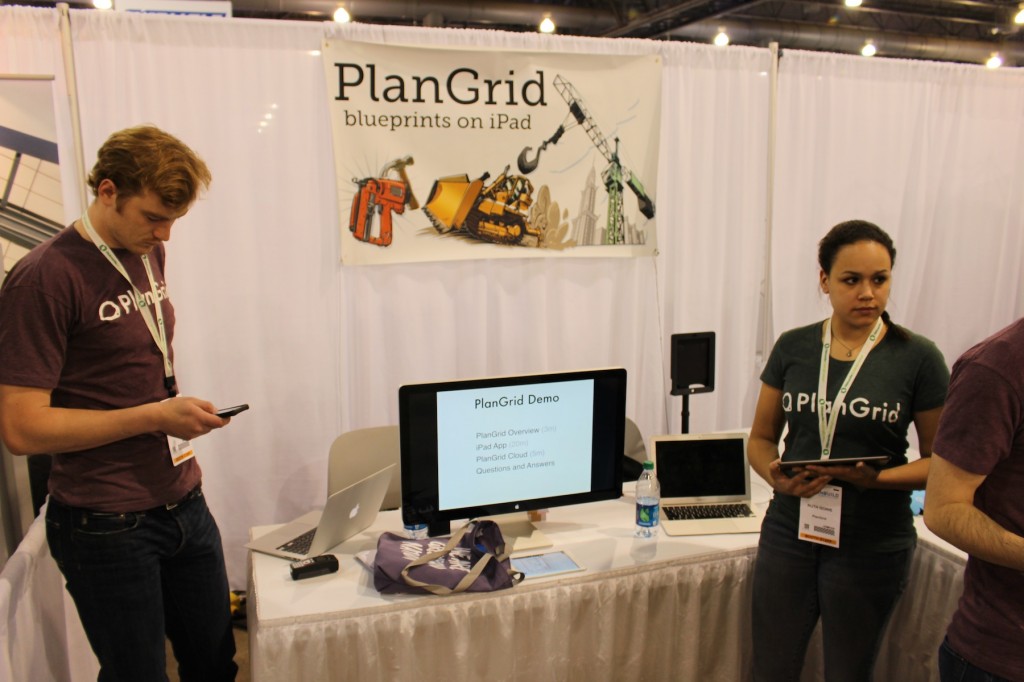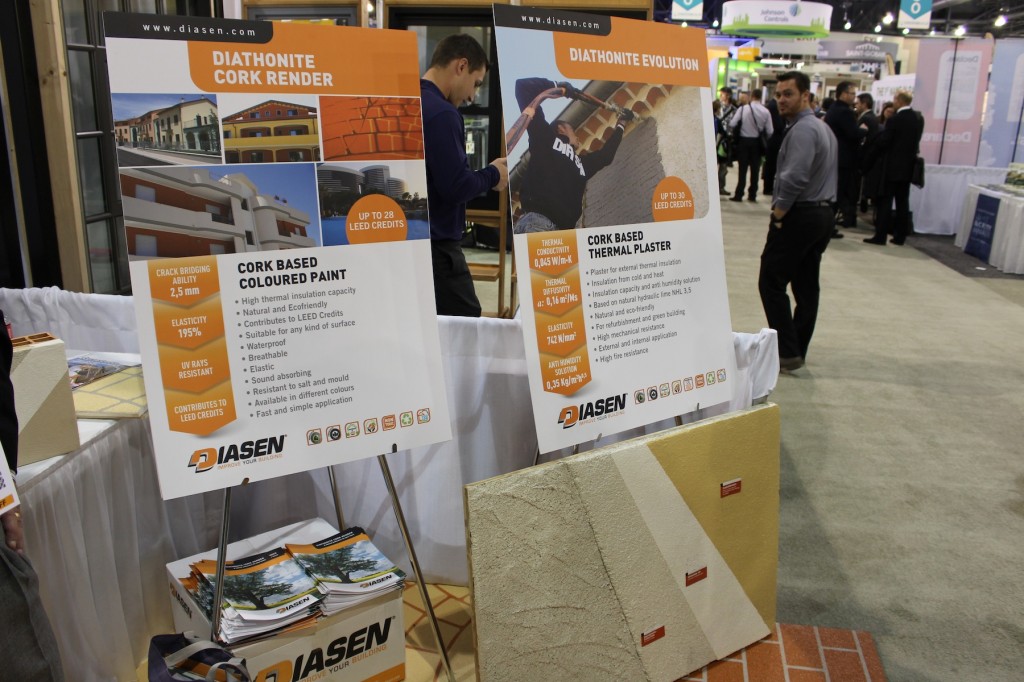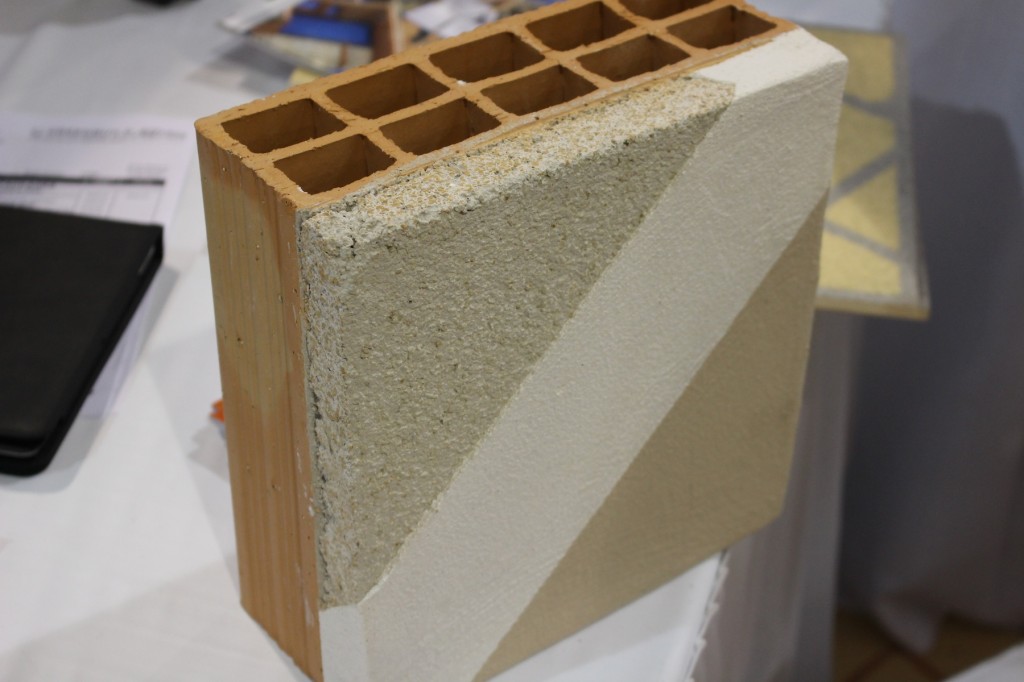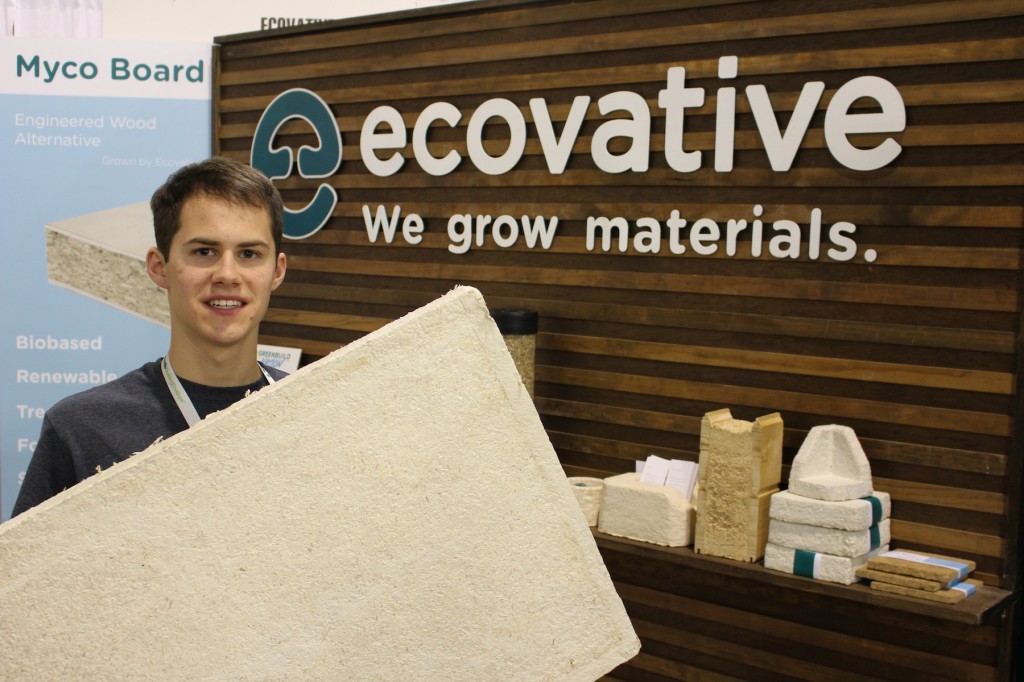Live from GreenBuild – Day 2 with Chris

Chris Phillips, Greening Homes’ President, is attending this year’s GreenBuild conference, in Philadelphia. This is the second of his daily blogs from the event.
It was a fantastic second day here at GreenBuild, with a full slate of education sessions and the opening of the massive Exposition. There’s lots worth talking about, but here are some of the highlights…
Quote of the Day: “Our buildings have a weight problem.”
Mark Loeffler in his introduction to his seminar, “Dematerializing the Built Environment”. Apparently – amazingly — our average home today is not only almost twice as large as what was built in the 1970s, but the weight per square foot has also more than doubled.
Today’s events
The first seminar of the day was also my favourite: Dematerializing the Built Environment: Theory and Practice. One of the presenters, Howard Brown, was a student of Buckminster Fuller’s. The session was all about looking at resources and pollution (called here “wasted resources”), to do more with less, and urging the audience to think about products in a different light: to assess these according to their “naked value” (the benefit for which the product was designed). Shampoo was used as an example: we don’t need shampoo, per say – we need a better way to clean hair. Shampoo is just the delivery mechanism for the real benefit of the product. The vast majority of what is in shampoo isn’t to serve its purpose: water, scents, colour, additives to create a certain viscosity…these just subtract from a product’s “naked value”, but make up the vast majority of a shampoo. And so…we don’t need batteries, we need better ways of storing energy. We don’t need insulation, but a better way to keep heat and cold separate from each other. This shift in thinking, it was suggested, will allow real innovation to happen and has led to, among other things, grown mushroom insulation, colour changing roof tiles that shift from black to white with the seasons, and phase-changing drywall to help store and release thermal energy…
Takeaways from a couple of other seminars today:
The Passive House Institute (Germany) is developing Passive House International, comprehensive guidelines for optimum strategies to achieve Passive House across climate zones around the world.
GreenGuard Certification is all about volatile emissions, but it does not test for one of the next biggest chemical health concerns in the building world: soil and stain resistors, which do not off-gas, but come out through abrasion and are found in dust particulate.
Neat new products of note
EZ-SIPS, from Toronto. Launched today at GreenBuild, this product offers custom made EPS insulation that offers the advantages of SIPS for half the price. Pure EPS panels at any desired R-value are custom-produced to a project’s stick framing dimensions, filling framing cavities and avoiding thermal bridging from the outside. Removable panels allow for easy electrical and plumbing installation. We’ve talked about using SIPS on our next project in East York. I wonder…
NEXUS E WATER. Also launched today, a combined water and energy recycling system specifically designed and priced for residential use (about $5K for the system itself, $8-10K installed). Originally from Australia. Here heat from grey water is captured super-efficiently by heat pump to heat a home’s entire hot water supply – almost completely without any added energy inputs (there is a gas back-up, if necessary). The grey water is then treated and cleaned for use in toilets and irrigation. The system is fully automated and designed to run like an appliance, with a change in UV lights and filter only once per year.
PLANGRID. Construction blueprints for use on an iPad, with free rendering for size, easy note and photo taking/embedding for progress updates, and punch lists. Might be worth exploring for the GH Construction Managers. Pretty powerful stuff.
DIATHONITE CORK-BASED THERMAL PLASTER, launched in North America today. The Ancient Romans embedded cork in their plaster for insulation…this is back to the future. The 100% natural product is made of cork and lime and devoid of any plastics. The cork is 70% recycled material, too. It’s both sprayable or spreadable by trowel by any stucco applicator and can be placed on any surface, including directly on brick or on XPS (with a primer), providing a natural insulating alternative to conventional acrylic stucco. The fully breathable cork thermal plaster has an R-value of 3.2/inch and can be applied up to 6” thick (with a catch – it can only be done 1” at a time). The plaster is expected to cost about $3/sqft per inch and $5/sqft if you include the two additional finish layers (a cork paint made of cork, lime, and water-based acrylic).
MYCO FOAM, from Ecovacative. This is the product that has the green building world very excited and capturing a lot of government attention and private investment. A possible future replacement for XPS and other board insulation products, this is grown mushroom board insulation at about R3.6/inch that is fully compostable and will be cost competitive with any other type of insulation. Heck, the stuff can stop thermal bridging just by growing around it! Myco Foam isn’t quite yet available in the market, but it’s close and it could be an industry game changer…
There’s many more…but I’ll save some for tomorrow!
Conversations
There’s a large Canadian presence here. I’ve come across pavilions from Quebec, Ontario, and Alberta and was only able to walk half the expo today. Some of the larger Canadian companies, such as Roxul, are representing themselves outside the provincial pavilions. The Canadians are always happy to run into each other. We all seem humble and excited to be here. We’re also, it seems, a bit less polished than our American counterparts. I chat for a bit with Doug Eicher, the Technical Solutions Manager at Roxul. I tell him I’m keen on the Roxul Comfortboard IS board insulation (which we’re using on one of our additions right now), but the guys aren’t so keen on its compressibility, which makes attaching siding perfectly a bit difficult and time intensive. It turns out Roxul is creating an installation guide hoping to help solve just this issue. When Doug finds out we’re based in TO, he tells me to get in touch when I get back. He wants his writer to meet our team to help them make sure they’re responding to contractor concerns. This is for you, Eliot! J
Here and there
GreenBuild isn’t providing food for attendees this year, and I’m thrilled. The Convention Centre is located directly across from the 150 or so year old Reading Terminal Market. It’s the best eating market I’ve ever been to (and I’ve seen a few), with several small eateries of nothing more than stools arranged around a middle serving and cooking area. I had the Bourbon Street Breakfast at the Cajun stall this morning: spicy red bean stew, cheese, eggs, and fried corn bread. Lunchtime at the market was insanely busy, so I grabbed a sandwich and a blueberry fritter from one of the many Amish bakeries. So full of blueberries it must have been good for me. All those antioxidants…
Someone from the Sierra Club has been guerrilla messaging concerns related to LCAs at LCA-themed seminars. The strategically left photocopied pages are titled “LCAs and Wood Products: Is this ‘green’ technique being used to hide some ugly truths?” Interesting…apparently most LCAs and EPDs don’t consider the impact of extraction processes in their analyses, meaning lumber from a clear cut would be assessed the same as one from a responsibly managed forest. The handout suggests that the forestry industry is hiding poor practices behind the averages…
GreenBuild’s bookstore is the one-stop shop for the latest in green building publishing, with many books that can be hard to find in Canada. Keeping the company library current and extensive is very important to me. I stocked up when I was last at GreenBuild in Toronto and I’ve done it again here. I’ve bought (ahem) a few books to take back with me. Three of note:
The Sustainable Building Bible, by Tim Pullen. An opinionated British review and assessment of alternative methods and products.
The Greened House Effect: Renovating Your Home with a Deep Energy Retrofit, by Jeff Wilson. It is what it is…they way of the future…
Maintaining and Repairing Old and Historic Buildings, by John J. Cullinane. Billed as a practical guide, we’ve had some work in this area recently.
